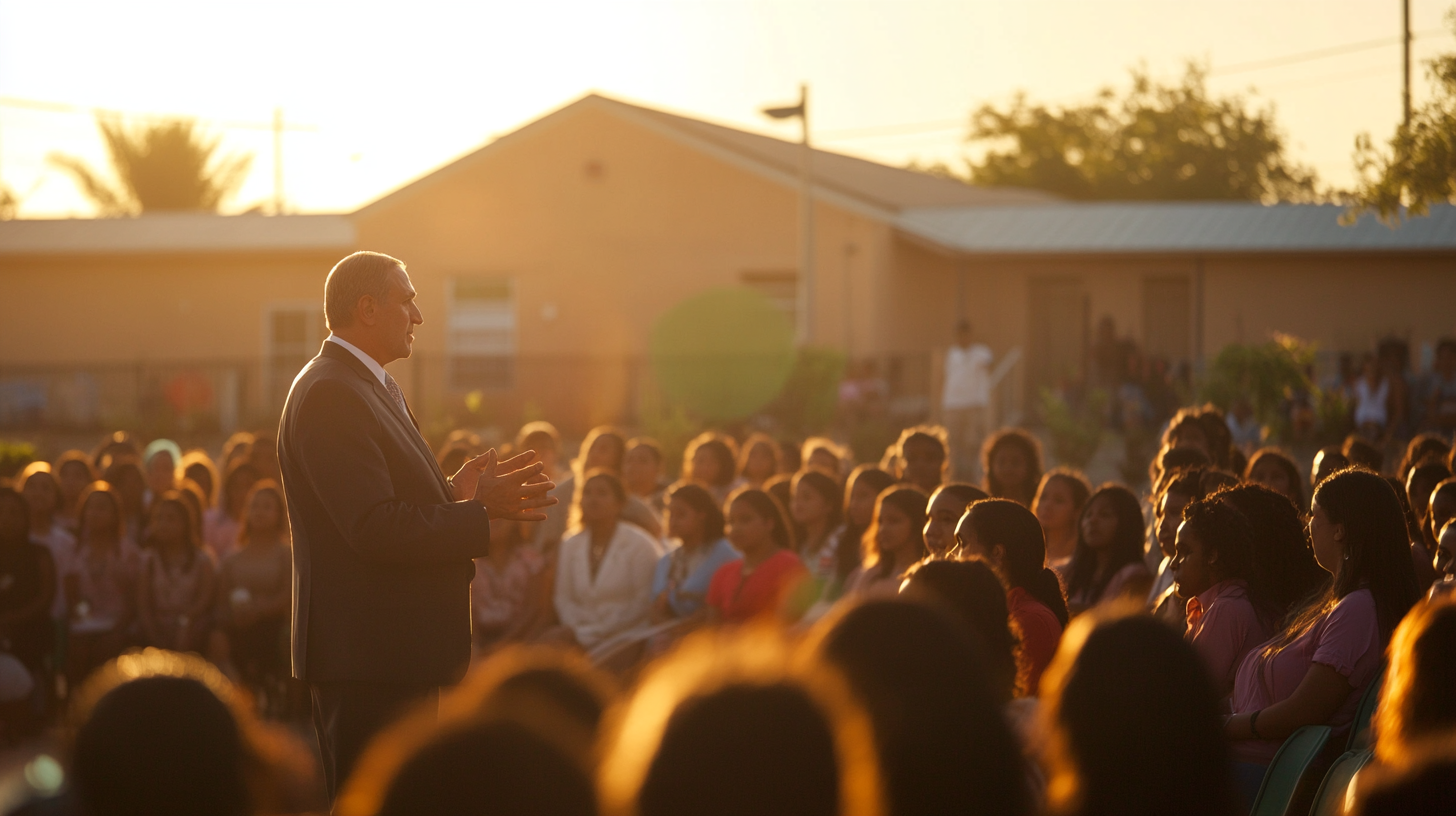**Gov. Abbott Visits Edinburg to Promote School Choice Bill**
In a significant development for educational policy in Texas, Governor Greg Abbott made a trip to Edinburg to advocate for Senate Bill 2, a controversial proposal aimed at expanding school choice options. The bill, already passed by the Texas Senate, is slated for a vote in the House, and if successful, it would establish an educational savings account program. This program would allocate $10,000 per child from taxpayer funds annually to empower parents to opt for private schooling.
**Understanding Senate Bill 2**
Senate Bill 2 is at the center of debates regarding school funding and educational equity. The proposed bill, according to Governor Abbott, intends to give parents more autonomy in deciding the best educational environment for their children. Speaking at Harvest Christian Academy, Abbott emphasized, “Parents must be empowered to choose the school that is best for their child.” If enacted, the bill would use the funds to cover tuition, textbooks, tutoring fees, and therapy for students outside the public school system, thereby offering a $1 billion budget over the next two years for these educational savings accounts.
However, the proposal has sparked concerns about its implications for public school funding. Daniella Lopez Valdez, the vice president of the Brownsville ISD Board of Trustees, voiced her apprehensions about the potential diversion of resources from public schools. “Siphoning funds from the budget that the state already uses for education to cut out for a new program is not a viable solution,” Valdez argued. She further noted that the current funding would still fall short of covering the full cost of private education, as tuition often exceeds the proposed $10,000.
Governor Abbott countered these concerns by asserting that the program would utilize separate funding and would not detract from existing public school budgets. He added that the proposed plan prioritizes low-income families and children with disabilities if demand exceeds available funds.
**Implications for the Rio Grande Valley**
The introduction of Senate Bill 2 comes at a pivotal time for the Rio Grande Valley (RGV) community. With a diverse and growing population, the region is grappling with balancing educational access and quality across different schooling systems. The bill’s potential to redirect resources has raised alarms among public education advocates in the Valley. They worry about long-term effects on local public schools, which play a crucial role in many communities.
In a region where public schools have historically been underfunded, the prospect of further resource allocation to private education initiatives brings added complexity. While some Valley residents see the bill as an opportunity for enhancing educational choice, others feel it might deepen inequalities in an already stratified system.
**A Broader Context**
The school choice debate in Texas is part of a larger, national conversation about educational reform. Similar initiatives have been introduced in other states, with varying degrees of acceptance and resistance. The push for educational savings accounts often stems from a desire to introduce market dynamics into the education system, promoting competition and arguably driving improvements.
However, critics argue that such approaches can undermine public education’s foundational role as an equitable provider of knowledge and skills. They caution against a trend where public schools, lacking equitable funding, face increasing challenges in delivering quality education, potentially exacerbating existing educational disparities.
**The Road Ahead**
As Valley residents and Texan citizens closely watch the developments around Senate Bill 2, the outcome could have broad implications for educational policy in South Texas and beyond. The bill’s vote in the House will be a decisive moment, influenced by local advocacy and broader public opinion.
In anticipation of the vote, community members are encouraged to engage with their state representatives to express their views and concerns. Resources for tracking the bill’s progress and understanding its potential impacts are available through local education boards and advocacy groups.
For further inquiries or to participate in discussions, residents can reach out to local education offices or visit community forums organized across the RGV. Active participation is pivotal in shaping the future of education in the Valley, ensuring it remains responsive to the needs and aspirations of all its students.
In conclusion, Senate Bill 2 stands as a momentous topic within the framework of RGV news, reflecting broader public debates on education. Balancing diverse perspectives, the community must navigate complex decisions that will ultimately mold the educational landscape for generations to come.







